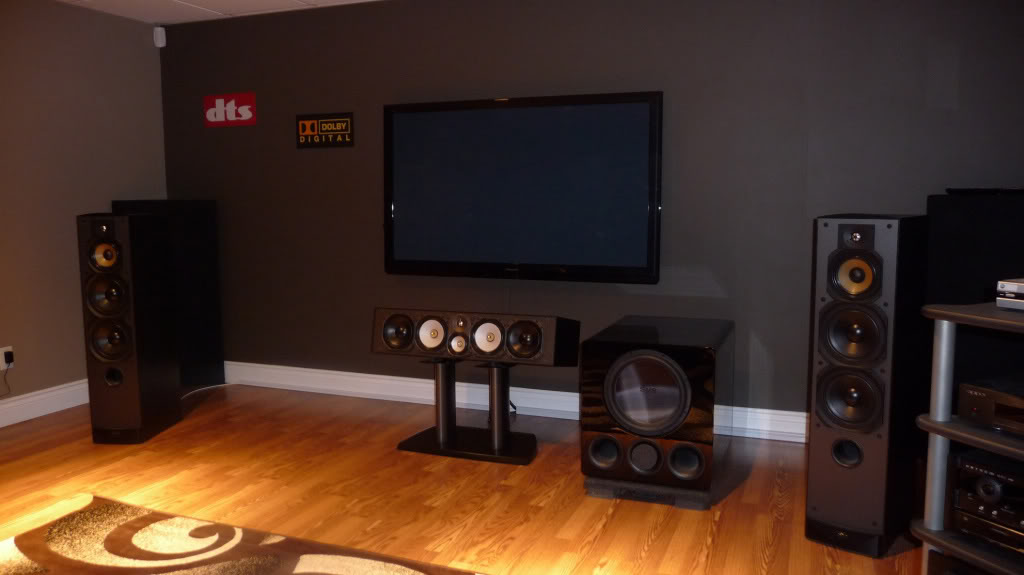Buying state-of-the-art equipment for your home theater isn’t the main determinant of the quality of entertainment you enjoy from your system. The screen size, where you place the speakers, and how you arrange the seats will influence your entertainment experience. In this guide, we highlight how the different aspects affect the performance of your system and give actionable tips for handling the home theater equipment puzzle.
Where to position speakers
Poor placement of speakers in a home theater setup can result in various challenges. You’re likely to experience unbalanced sound, stifled noises, and excess bass sound. To get the best sound, here are some placement tips for the speakers;

The system is likely to have utmost four sets of speakers: sub-woofer, center channel speaker, front (left and right) speakers, and the surround (left and right) speakers. The position of each depends on the kind of channel setup you adopt for the home theater.
8 tips for buying the right smartphone
There are three main layouts:
- 2.1 channel setup: you get this when you include a subwoofer in a stereo sound system. For optimum performance, place each front speaker approximately 3-4 ft away from the display (on the left and right side) facing the audience. Each should be 2-3 ft away from the wall and inclined gently towards the center. Place the subwoofer close to the receiver but away from surfaces like walls, cabinets and such, which can obstruct the sound waves.
- 5.1 Channel arrangement: this setup involves the center speaker, surround speakers, and the front speakers. Place the left and right front speakers as described in 2.1 channel setup. Then, align the center speaker with the screen, corresponding to the listener’s ear level (roughly 2.5-4.2 feet above the ground). The approximate position of surround speakers is 2-3 feet above the listener’s ear level and at an angle of 90-110 degrees facing inwards.
- 7.1 Channel layout: this arrangement looks like a combination of 5.1 and 2.1 channel setups. However, it adds left and right back speakers, positioned at 135-150 degrees above the listeners head level, behind the seating.
Ideal distance between the screen and the seating
When determining where to place the seats with respect to the display unit, the size of the screen matters a lot. Other considerations will include the seating arrangement, visual clarity, number of seats, and image resolution. Many home theaters don’t have an ideal layout and this makes it hard to calculate the exact distance between the display unit and seating.
However, you can use the average distance calculated as follows:
- Minimum viewing distance=Width of the Screen (inches)X2
- Maximum viewing distance=Width of the Screen (inches)X5
Arrange your seats between the minimum and maximum distances for an optimum viewing experience.
Top 3 Mobile Technology Trends in 2018
Arrangement of seats
After identifying the space for the seats, it’s time to arrange them. Make sure that the heads of listeners are more than 4ft away from surround speakers. This way, listeners experience a balanced sound between the main channel speakers and surround speakers. Choose a raised seating platform to ensure everyone has a clear view of the TV. Also, leave a space of 4ft between the seating and the walls around.
The size of the screen
When choosing the screen size, it is important to consider the dimensions of your home theater room and seating arrangement. A large screen in a small room will cause viewers to constantly tilt their heads in different directions to catch the full action. A small screen in a big space doesn’t feel good either. Here is how you estimate a suitable screen size;
- The screen’s size should be approximately 1/3rd to 1½ of the distance between the display and seats. For instance, if the back seat is 12ft (144”) from the front wall, keep the screen size between 144X1/3 inches and 144X3/2 inches.
- For a narrow and deep room, choose a screen of width that’s not more than half of the width of the wall where it’s mounted.
How to manage wires
Handling your wires properly not only adds to the aesthetic appeal of the room but also improves the performance of your system. Unkempt cables drooping from a wall-mounted screen are not only unsightly but also distractive. Loose wires running across the room to side speakers can cause slipping, accidental falls or get damaged. A twisted mass of cables at the back of an audio-visual (A/V) cabinet causes interference to the audio/visual signal. Here are some tips for handling the wiring menace:
- Invest in wire ties for bundling any cables that run from a single source or share a pathway. This keeps them organized and neat.
- Find adhesive pads to fasten wires behind the A/V cabinet, attach the bundled and drooping cables on the wall, or secure any cables running to rear speakers onto the wall.
- Since power cables release electromagnetic fields that can distort video signals, tie them separately from A/V cables.
- Use raceways to conceal audio-visual cables. These are wooden or plastic conduits for wires and cable bundles.
Conclusion
A home theater system is as effective as its setup. Handle your equipment correctly and see how easy it is to enjoy Holywood experience right at home. Furthermore, you don’t need any technical training to implement the tips given in this guide.

Share your thoughts